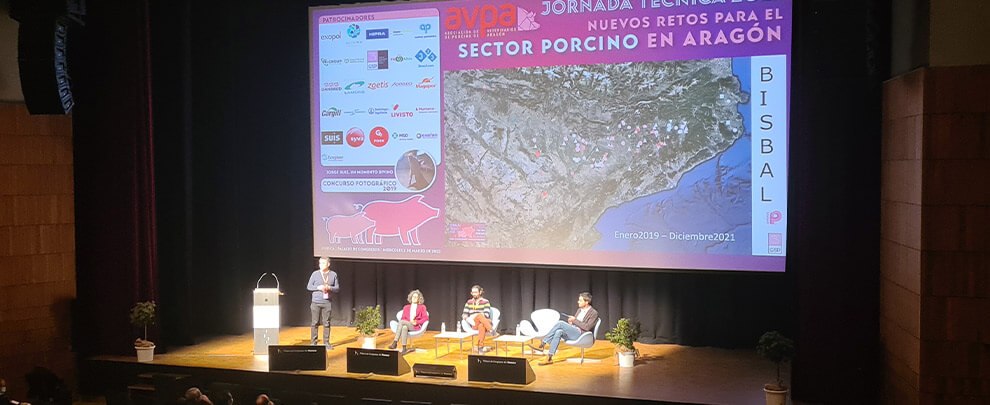Blog
Blog

Markets, the SIGE, and PRRS were discussed at the AVPA conference
04th March 2022 - News
Aragon is the main pig producer in Spain. However, the increase in energy and production costs, and the decrease in Chinese pork imports, which have plunged the price of live pigs, have outlined a new horizon with noticeable challenges that Aragonese pig farmers will have to face. These questions have been treated in the technical conference that the Association of Pig Veterinarians of Aragon (AVPA) has held at the "Palacio de Congresos de Huesca".
China continues to play an important role in the pork market. This was explained by Alberto Alvárez, from Zoetis Spain. He assured that, despite the decrease in its imports, the Asian giant remains the world's largest importer of pork. However, their government has already announced its intention to reduce its imports. "During 2021, China has recovered 11% of its production," he pointed out, adding: "despite this, its recovery has been fictitious since they produce the same, but of less quality." Given the forecasts of a decrease in Chinese imports, interesting opportunities arise in other countries such as Japan, which is a market that increasingly demands more fresh meat (not frozen); Korea, which is demanding a lot of Spanish meat; The Philippines, which is emerging as an interesting market to export by-products that have no outlet here; and the United Kingdom, due to the abandonment of labor in the pig sector caused by Brexit. Faced with these opportunities, the challenge that the Spanish pig must face is to maximize sustainability and animal welfare.
The aforementioned challenges are closely linked to the application of the SIGE, the new Comprehensive Management System for Pig Farms. On this issue, Enrique Novales, General Director of Food Safety and Quality of Aragon, explained that this document will allow unifying all the information on the farm, and must be updated every five years unless there is any change on the farm. "The veterinarian will play an important role in the development of this plan, addressing issues of biosecurity, health, hygiene, etc.", Novales explained. The main advantages of this resource will be the efficient use of resources, the integration at the same level of all relevant farm issues, and the reduction of documentation.
Highly virulent strains were the focus of the last part of the technical session. Regarding this issue, Cinta Prieto, from the Complutense University of Madrid, highlighted that PRRSV strains differ in virulence, both in the case of PRRSV-1 and PRRSV-2. In this sense, she added that virulence can be considered a continuous variable and that the strains of greater virulence seem to have a greater transmission capacity and can evade the previous immune response easier. For his part, Gerard Martín, from the Autonomous University of Barcelona, explained that since 2020 a significant proportion of PRRSV-1 (Rosalía) outbreaks with atypical virulence have been detected. Finally, Jordi Baliellas, from GSP Lleida, offered a review of the different outbreaks of PRRS detected in recent years, as well as their diffusion pattern. Faced with the threat of this virus, he stressed the important need for biosecurity.






